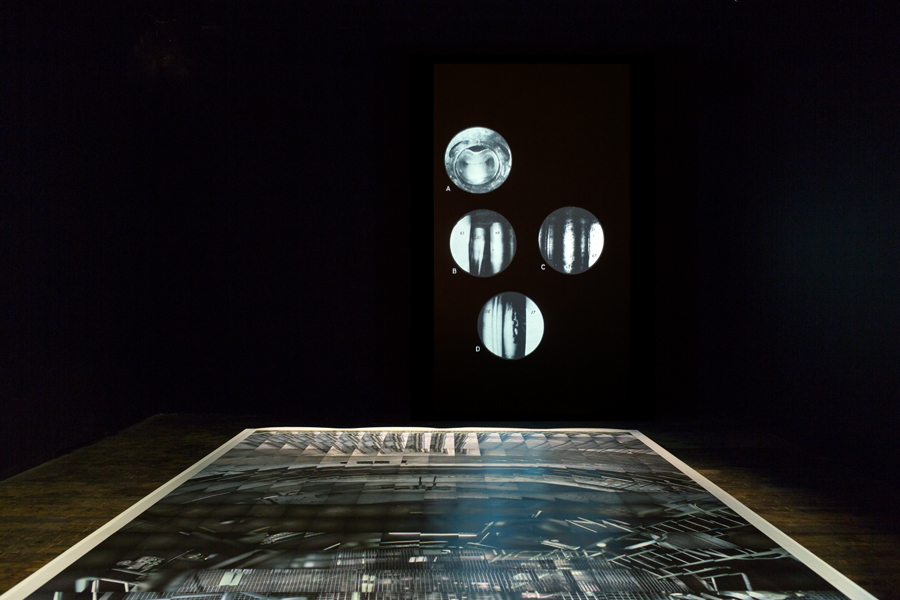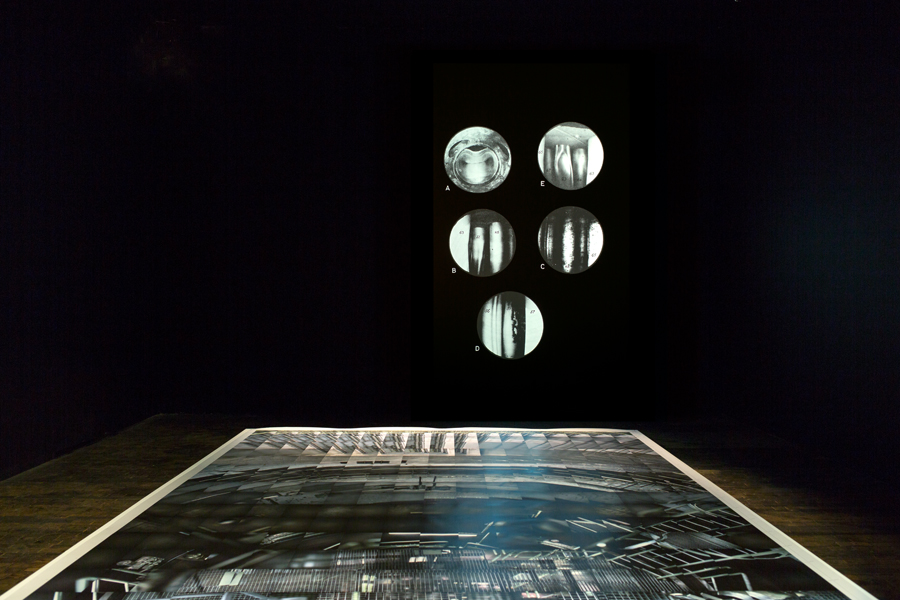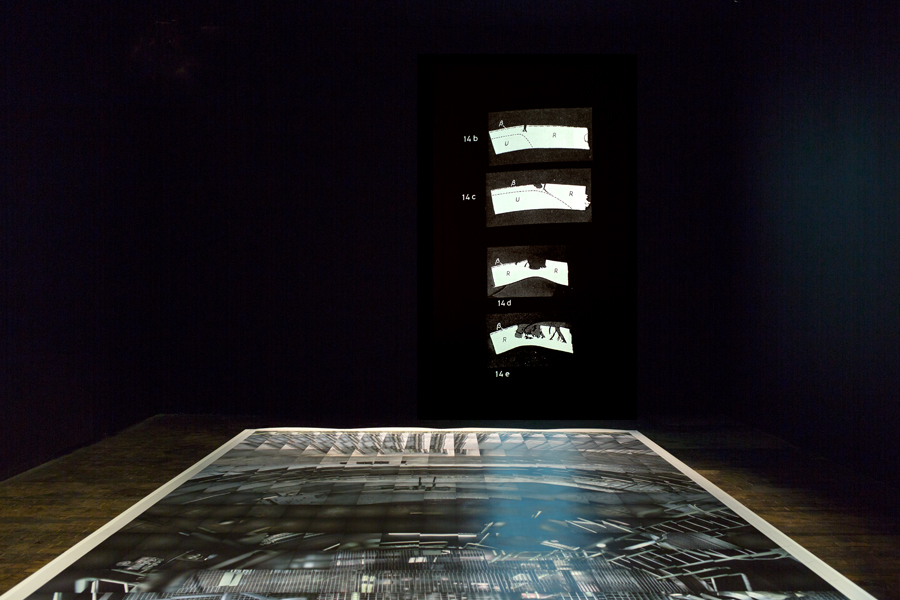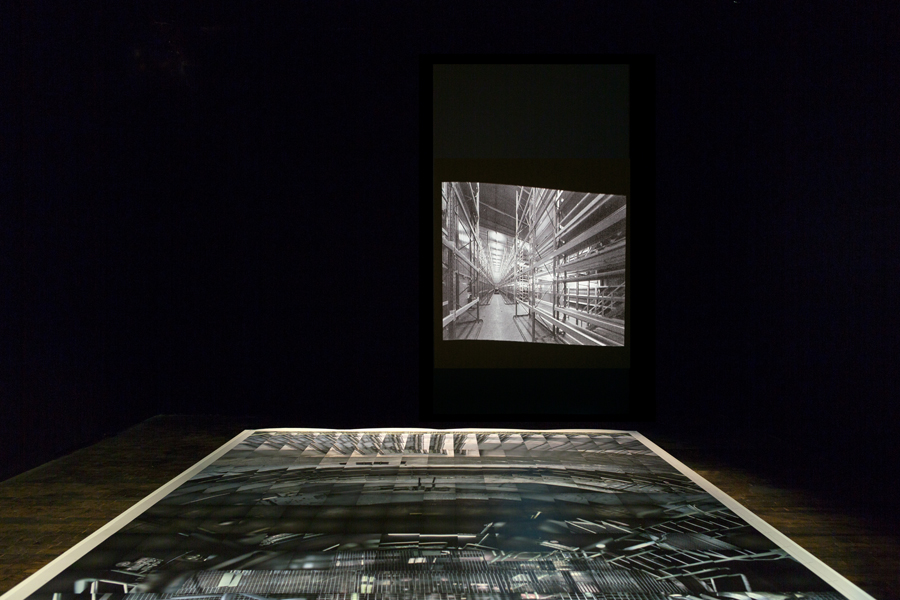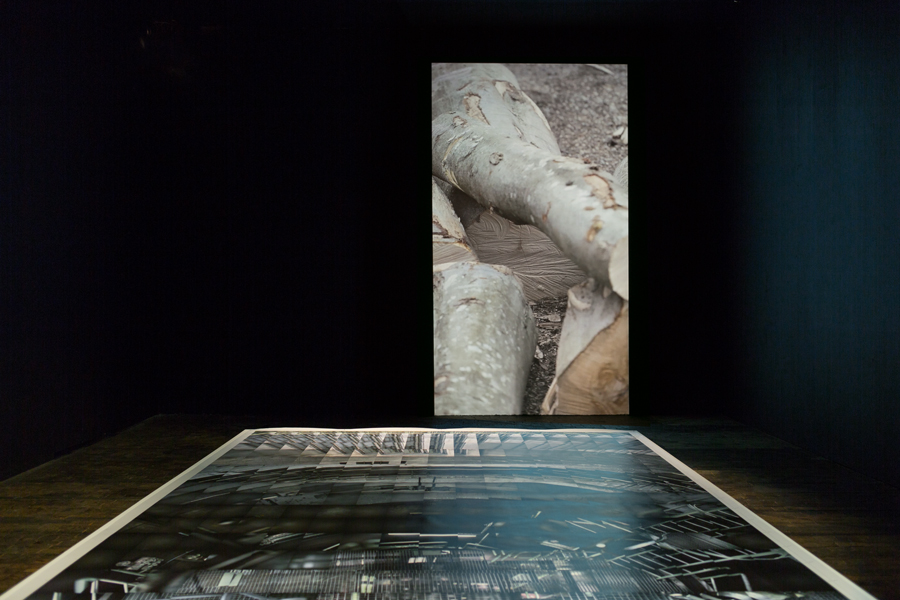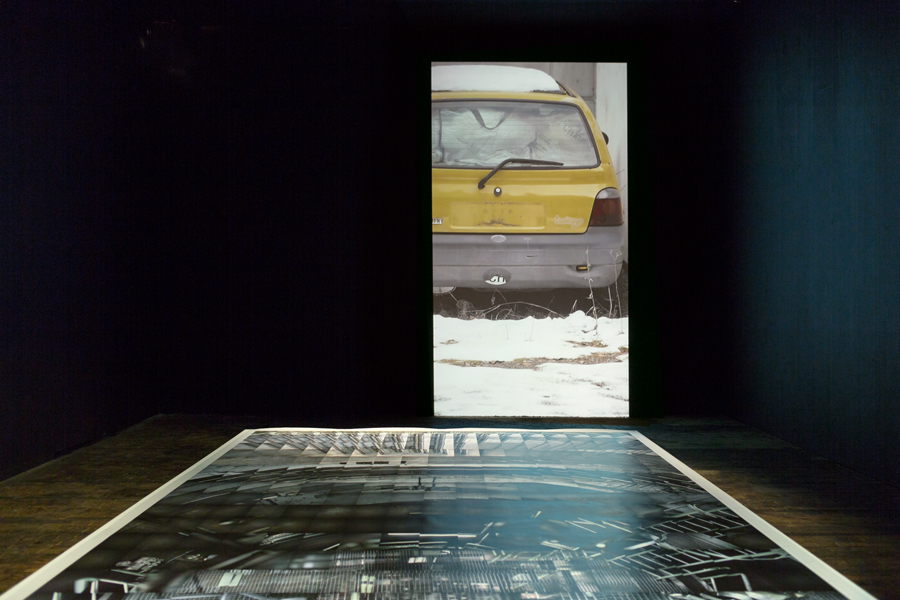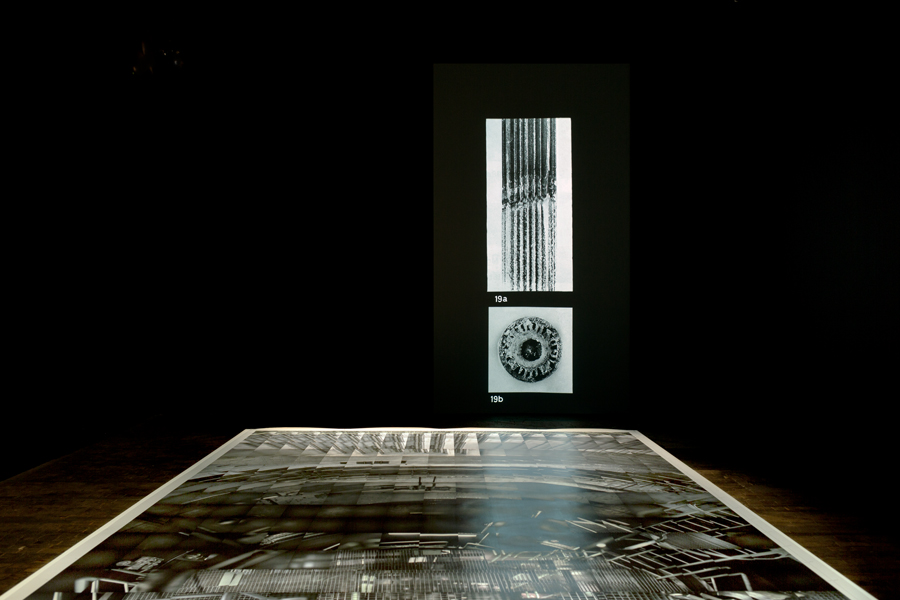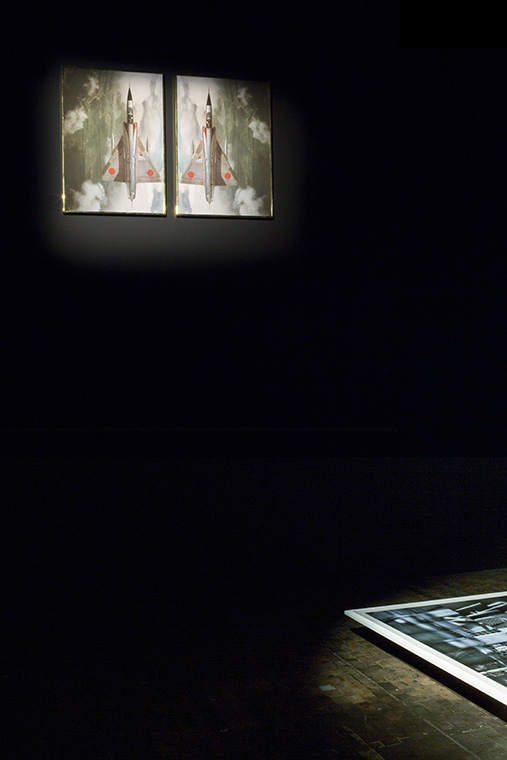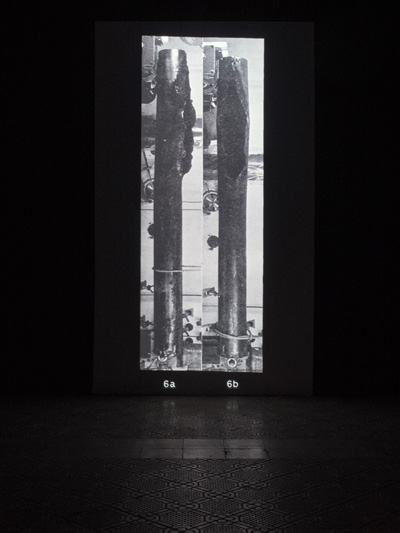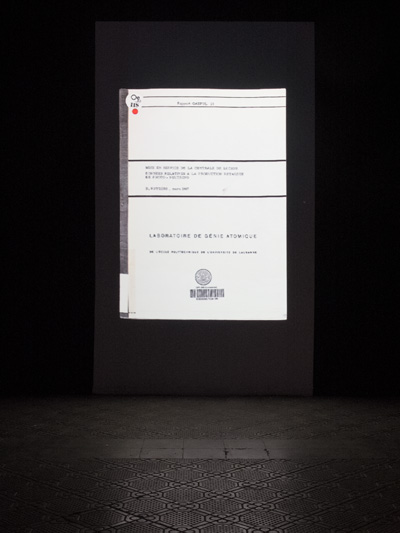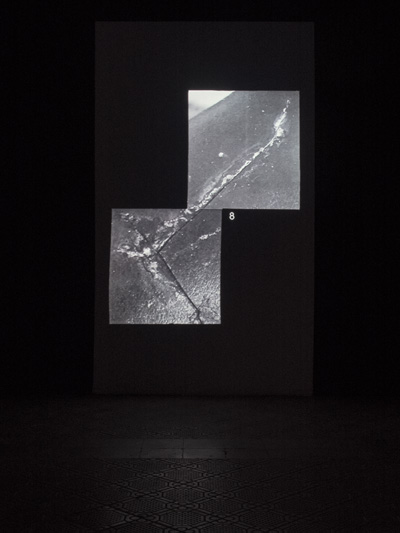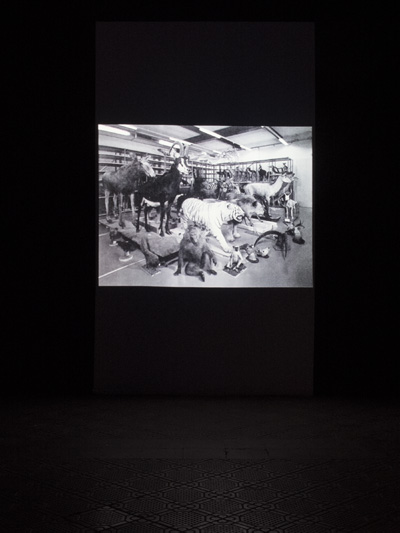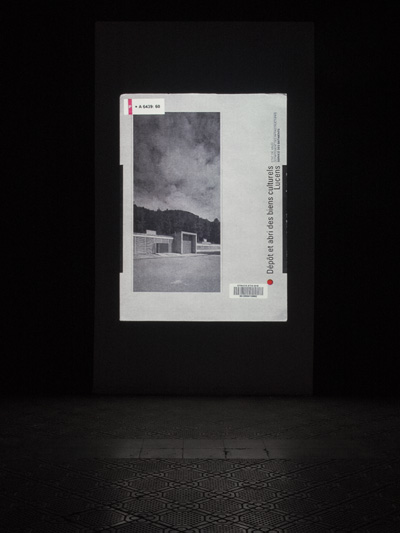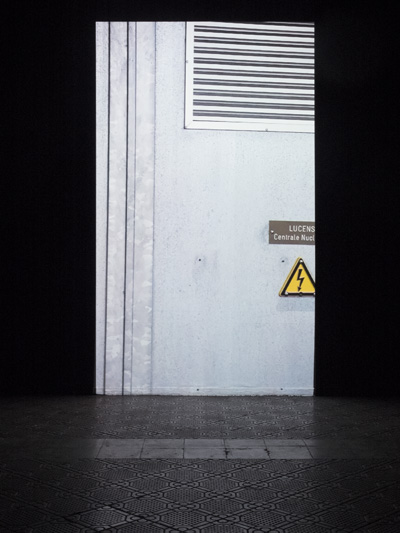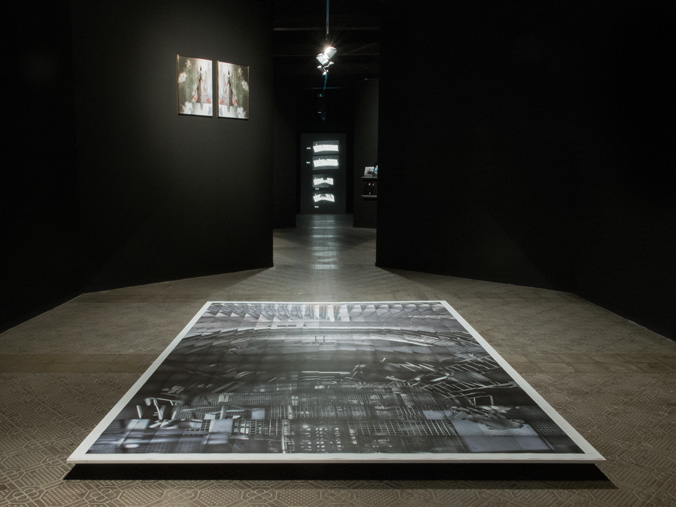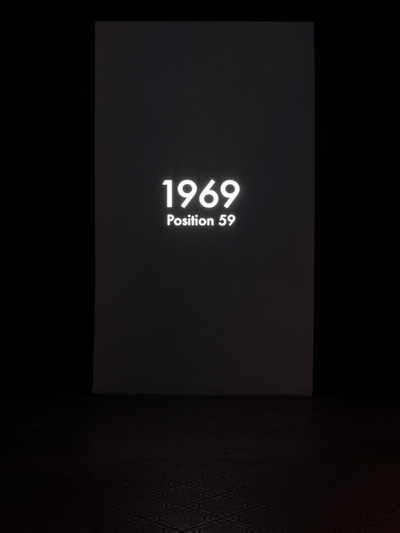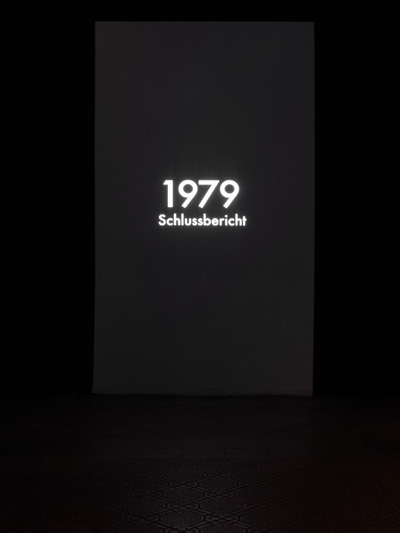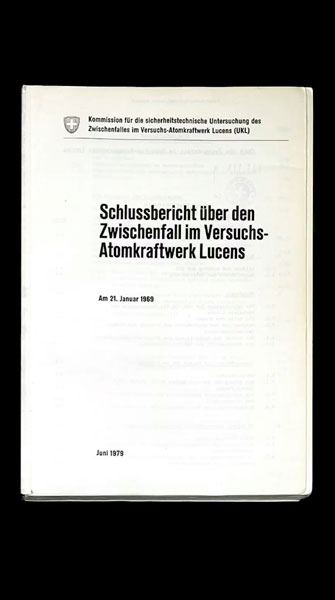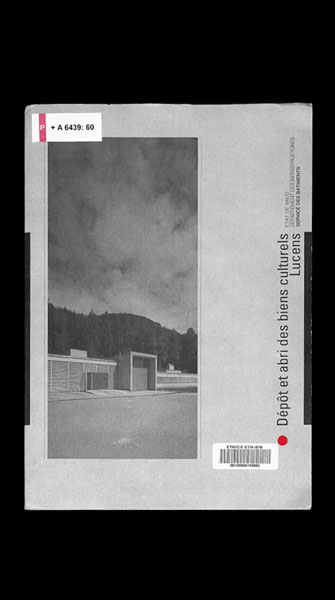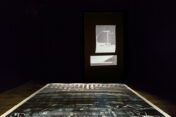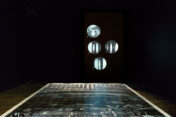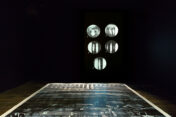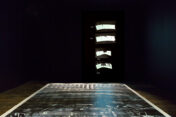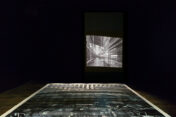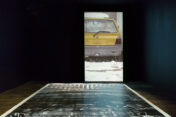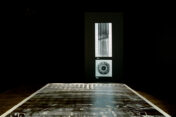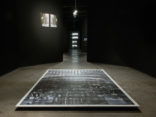Asynchronous II – Depot ABC, 2013
Lucens, Switzerland, 315 single images, recorded with
computer-controlled SLR camera,
January 2013
Asynchronous I–X is a series of works on the history of nuclear technology from the Cold War to the internet age.
Asynchronous II – Depot ABC is a silent HD video that combines historical visual material and single images from a panorama recording of the abandoned nuclear test reactor in Lucens, Switzerland.
In Lucens, the Swiss wanted to develop their own type of nuclear reactor. After several delays, the reactor, located in a cavern, was inaugurated in 1967. The first attempt to obtain maximum output resulted in an explosion and a core meltdown. It was the end of the utopia of an independent Swiss nuclear industry. The incident was investigated by a parliamentary committee, which published an in-depth report on the catastrophe in 1979. Today, the facility is used as cantonal depot for cultural assets.
Asynchronous II uses images and graphics from three historical documents: a sober scientific publication on the inauguration of the reactor from 1967 (no photographs, just graphics and text), from the 1979 parliamentary report (PUK) (photographs of damaged parts and details), and from an illustrated brochure on the site’s transformation in a depot for cultural assets (editorial photography). The shift from the hermetic specialist’s report to the slick PR brochure indicates how governmental communication strategies have changed over the years. The video ends with a sequence of eighty-five single images from an automated recording on a grey Sunday
in January 2013 in Lucens.
Some images from this recording are part of Sale & Pleasure Abstracts, a series of posters (120 × 80 cm).

